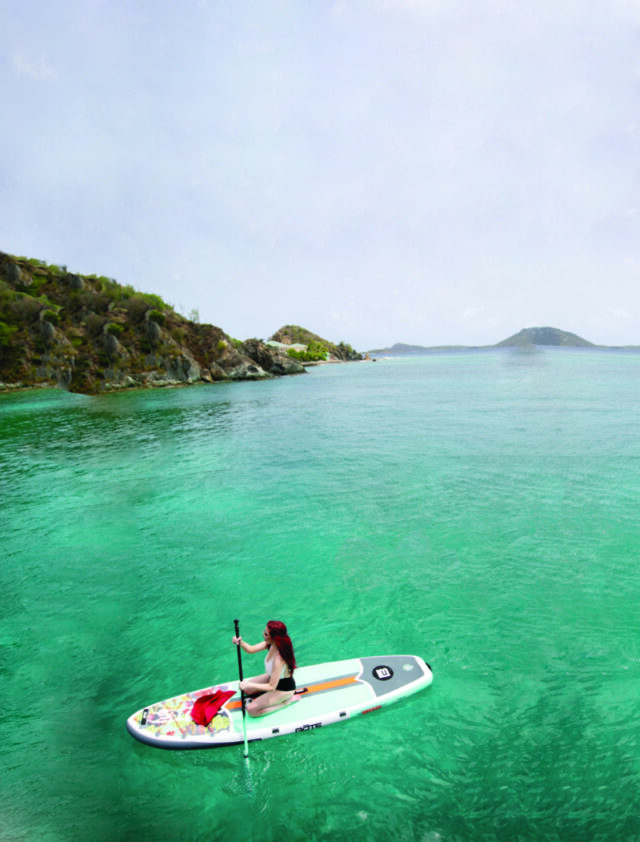
A recognized leader in functional medicine focused on integrative, regenerative, anti-aging and natural medicine modalities, Dr. Stephenson is the CEO of VibrantDoc, a new health and wellness media venture. Her website offers access to impactful data that she shares in her book Vibrant, available on Amazon. Dr. Stephenson is on the board of the American Nutrition Association, and serves as ambassador for the American Heart Association. She is also vice-chair of Gateway for Cancer Research, which, at the Gateway Celebrity Fight Night fundraiser in March, raised $5 million for cancer research.
Cristina Cuomo: As the weather warms up, we’re inclined to spend much more time outside. There’s quite a lot of research showing the physical and psychological benefits of nature exposure. Can you talk about eco-therapy?
Stacie J. Stephenson: Eco-therapy is about getting into nature, getting outside. Get under those blue skies, get out in the sunshine. It sounds so ridiculously simple. I don’t think it is, in our world. I will work all day, and I’ll look outside—I can see the sky and trees. But the truth is, you need to really feel it, touch it, and experience it physically as well. Getting into nature improves mood, reduces depression, calms anxiety, and provides a space for meditation. You could combine exercise, meditation and eco-therapy into one 30-minute walk.
CC: Earthing is the practice of putting bare feet on the earth, the grass or sand on the beach, and connecting with nature. Research supports these benefits, and describes the electromagnetic quality of Earth, and how it can improve health.
SJS: Notice the first time a child steps onto the beach. It’s like a light bulb moment, and the same goes for grass and dirt. There is an electromagnetic connection that our cells have with our earth, a resonance. My husband calls me the Barefoot Contessa because he says, “You have all these shoes, and you run around barefoot all the time.” I know I feel better getting those toes in the grass, in the sand, in the water.
CC: Tell me a little bit about blue therapy, the benefits of being near water.
SJS: Most human beings are drawn to water. Coasts tend to be a little more temperate, so we are able to be outside more when we’re on the coasts. Almost everyone can engage with water because it’s deeply ingrained in us, biophysiologically, to feel safe around it. At the ocean you’re breathing in salt, so that is wonderful. Mother Earth is really not earth, it’s water.
CC: What is forest bathing? Explain the benefits of being with trees.
SJS: Forest bathing simply means being in the forest, engaging oneself in the rhythm and the energy and the presence of the trees, and just trying to be in that moment, that oneness with the forest. There’s a rhythm going on there. It will reduce your stress. Green therapy, forest bathing, earthing and grounding, getting connected to the electromagnetic resonance that you share with Mother Earth—you can store it up. Any dose, in any amount, at any time is going to give you more peace, improve your mood, and help your heart rate. Maybe that’s your vacation this year—a little bit of beach, a little bit of forest.
CC: How can we be our most vibrant selves? It’s a simple formula that you break down in your book. Glow is part of that. It’s not an external thing, it’s an internal thing. Can you talk a little bit about that?
SJS: We are a culture chasing the external—not that I’m against any of that, but what’s going to make you glow is food and water, nourishment, sleep, your emotional world, your relationships. You have to focus internally. There are no shortcuts. Psychologists say there’s no way around pain; you have to go through it. Well, it’s kind of the same thing here. To get that wonderful feeling of looking glow-y and alive and alert and healthful and fit, you really have to go inside first and take care of your body. There are no shortcuts, but you’ll respond.
CC: Speaking of glow, let’s talk about sun exposure and light therapy. Vitamin D is very beneficial to skin, and to health in general.
SJS: We absolutely have to have sunlight. Ten or 15 minutes of sun exposure is very helpful. Sometimes we go too far—I don’t want people to be overly exposed. Most people should consume a vitamin D supplement, because getting enough vitamin D by going to the beach just once a week is not going to happen.
CC: Do you have recommendations for skin creams and SPFs?
SJS: I like physical [mineral] barriers for sunblocks, such as zinc oxide or titanium dioxide. Those tend to hold an SPF of about 40. Remember, that’s only 40 minutes in the sun with full protection.
CC: Thanks for the tips on launching into summer.
SJS: Yes. Be vibrant. Don’t get burned. drstaciestephenson.com





